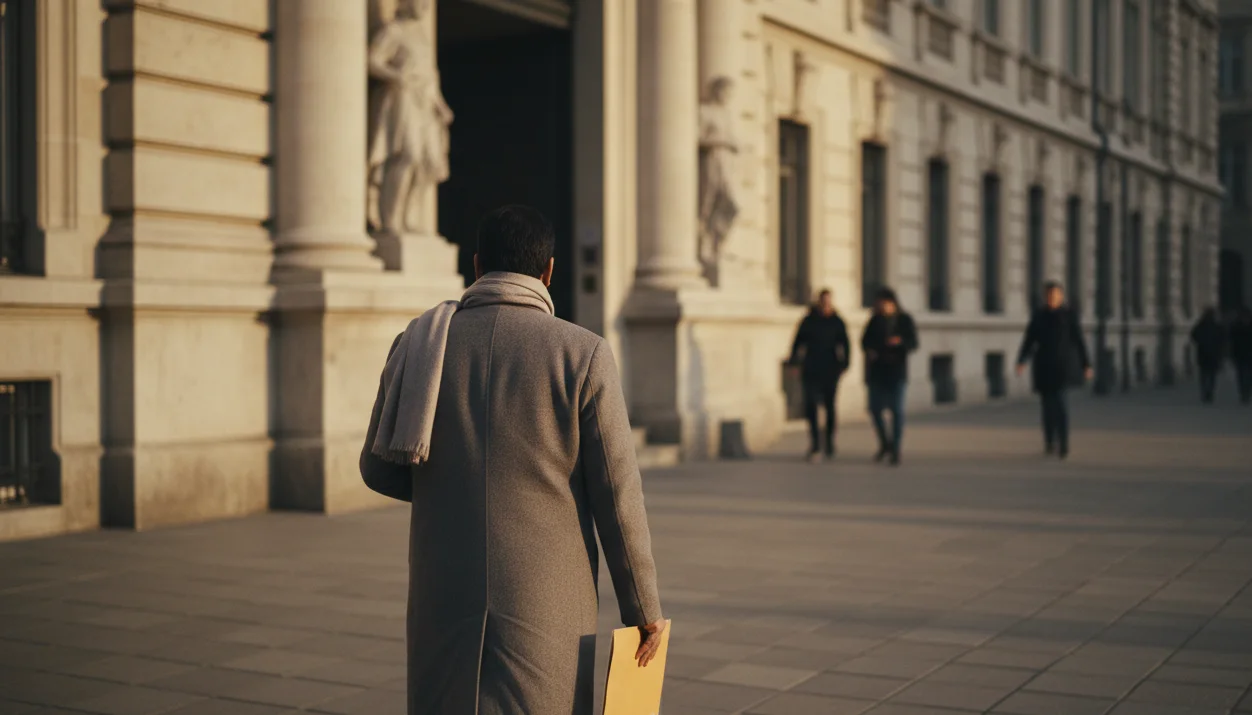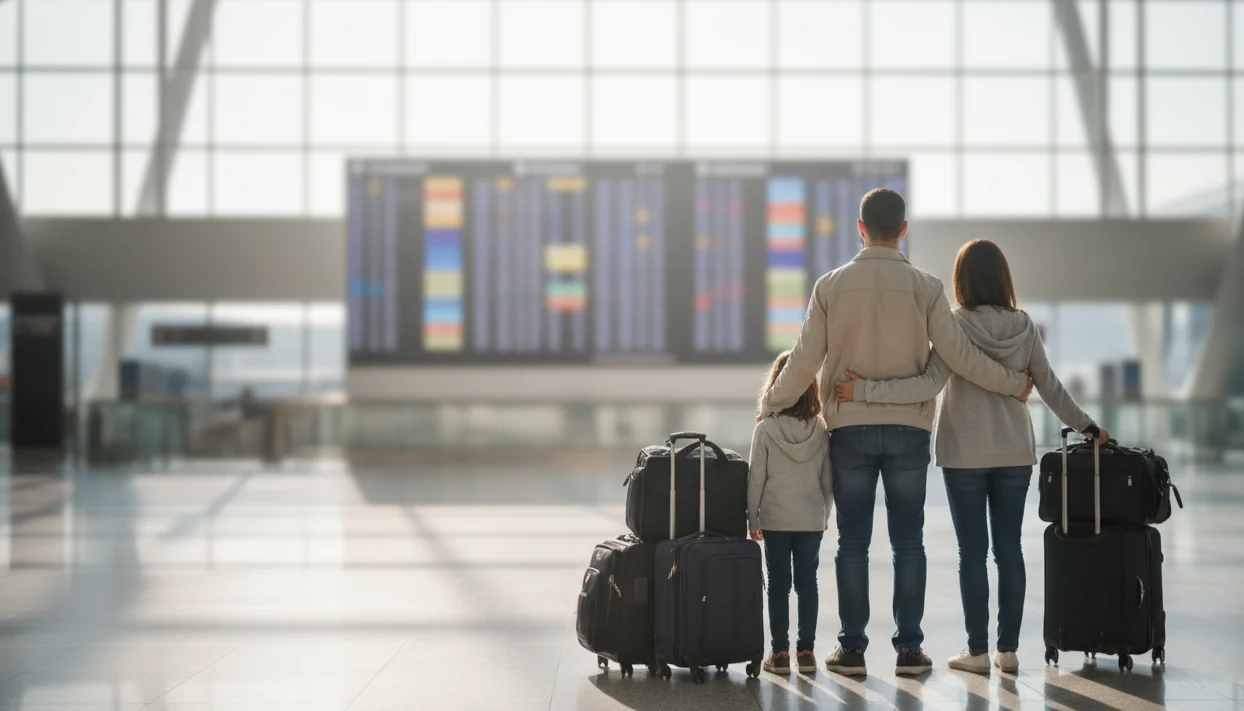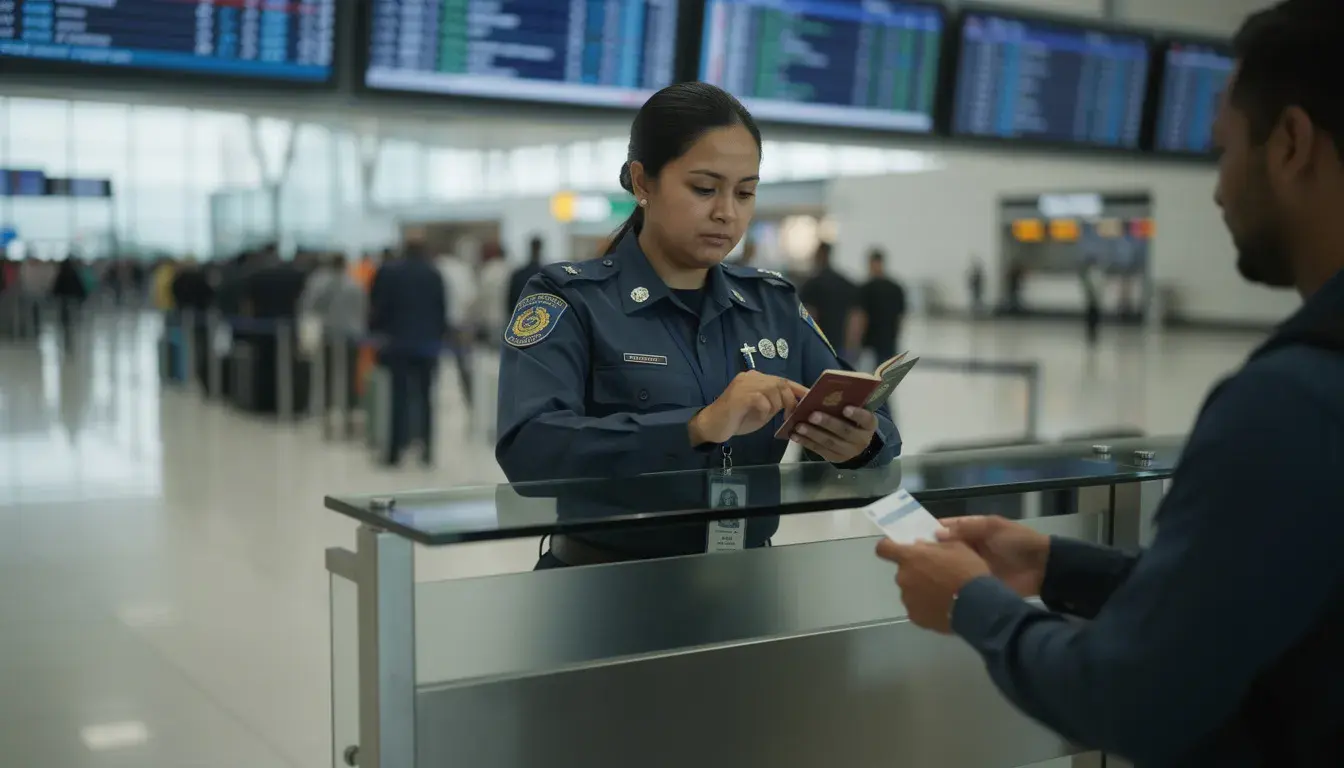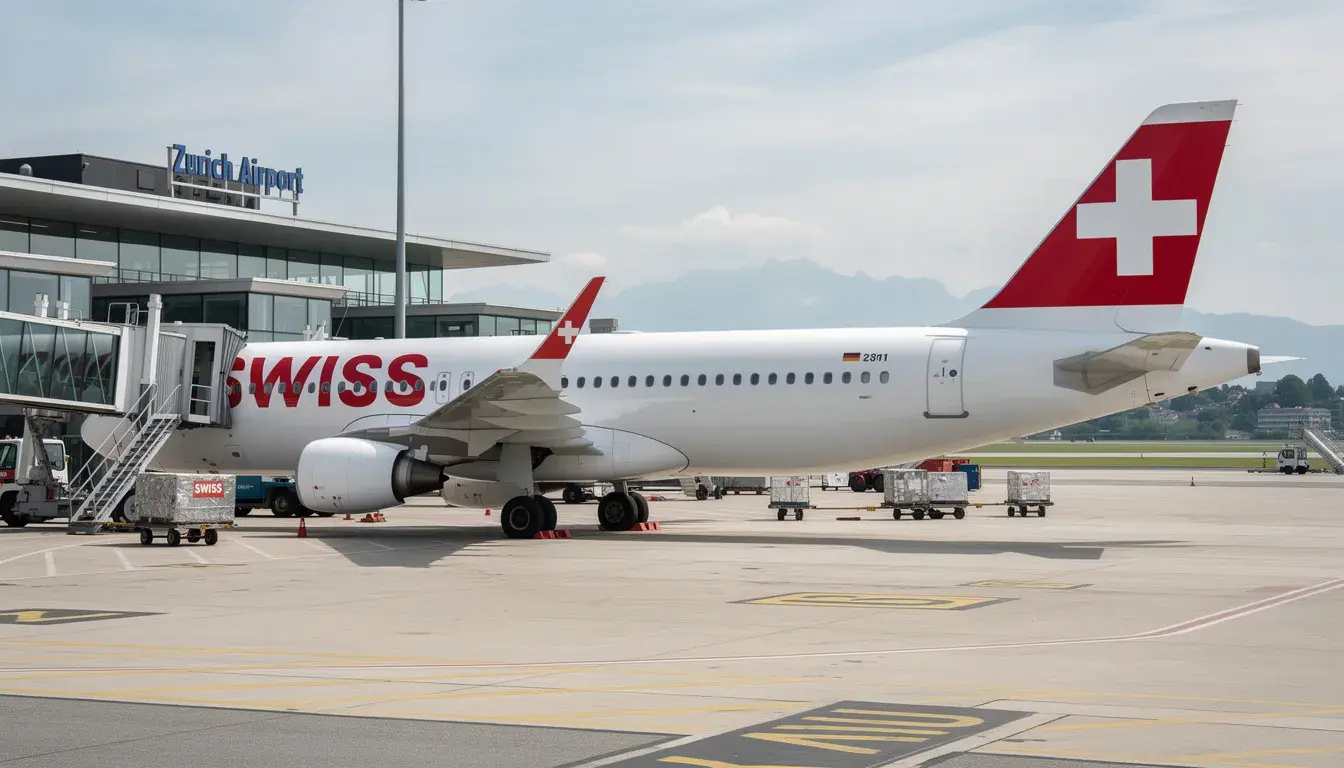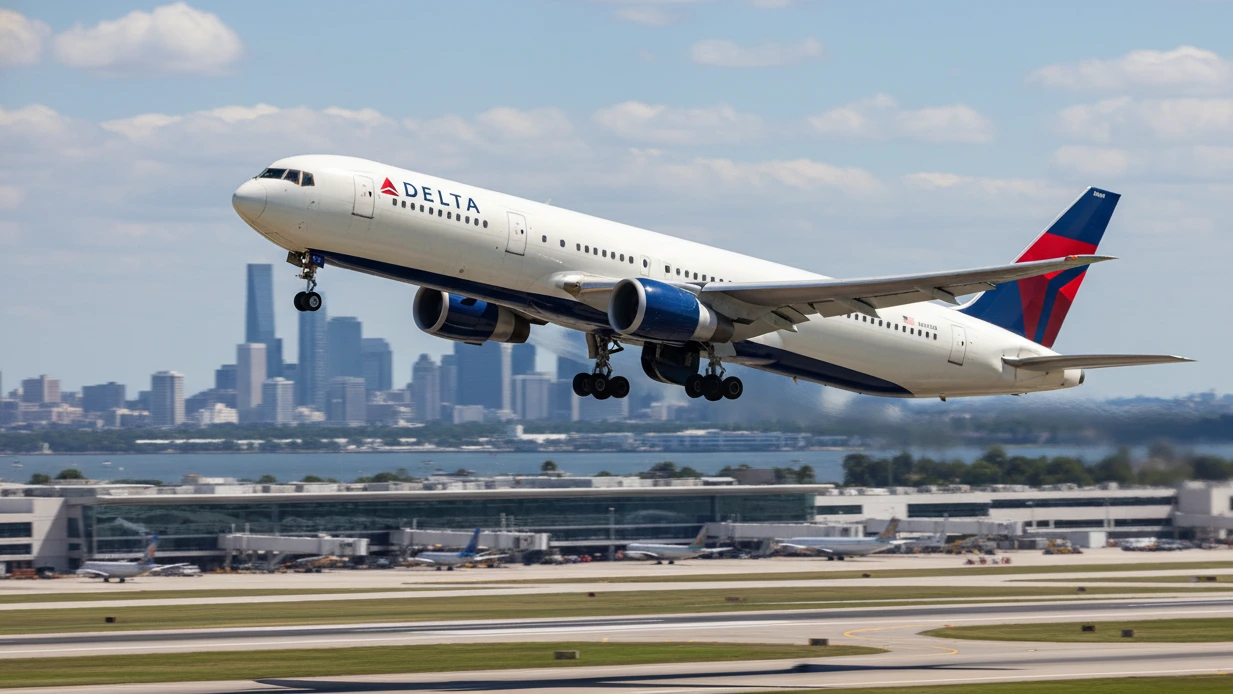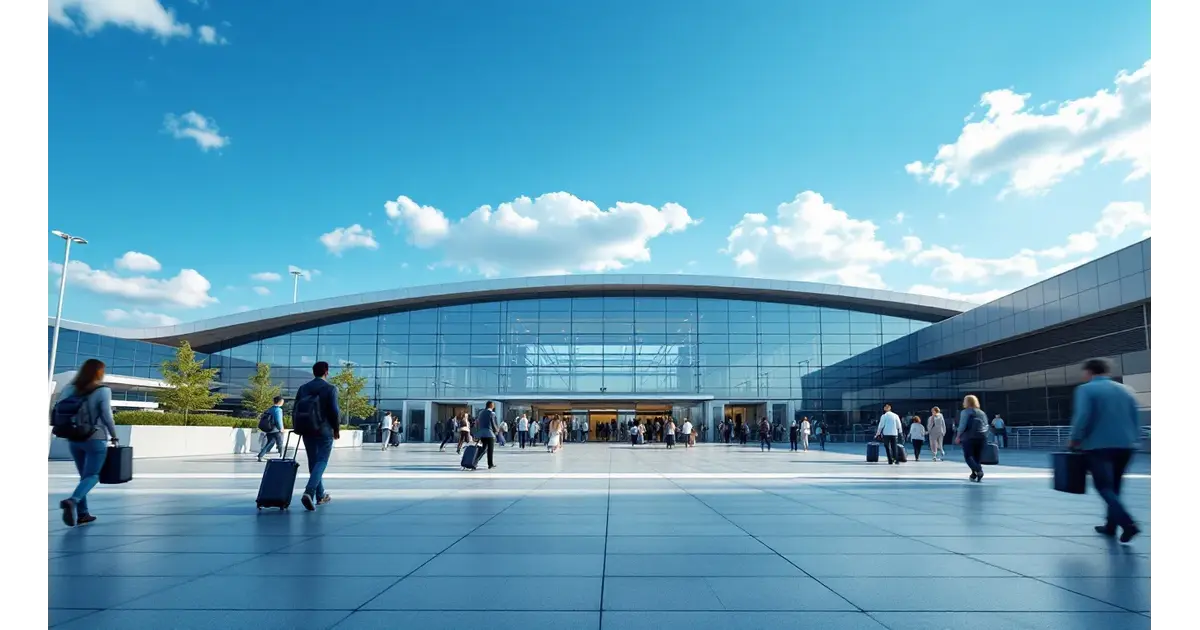Flight Reservation for Canada Visa from India — Embassy Format Guide
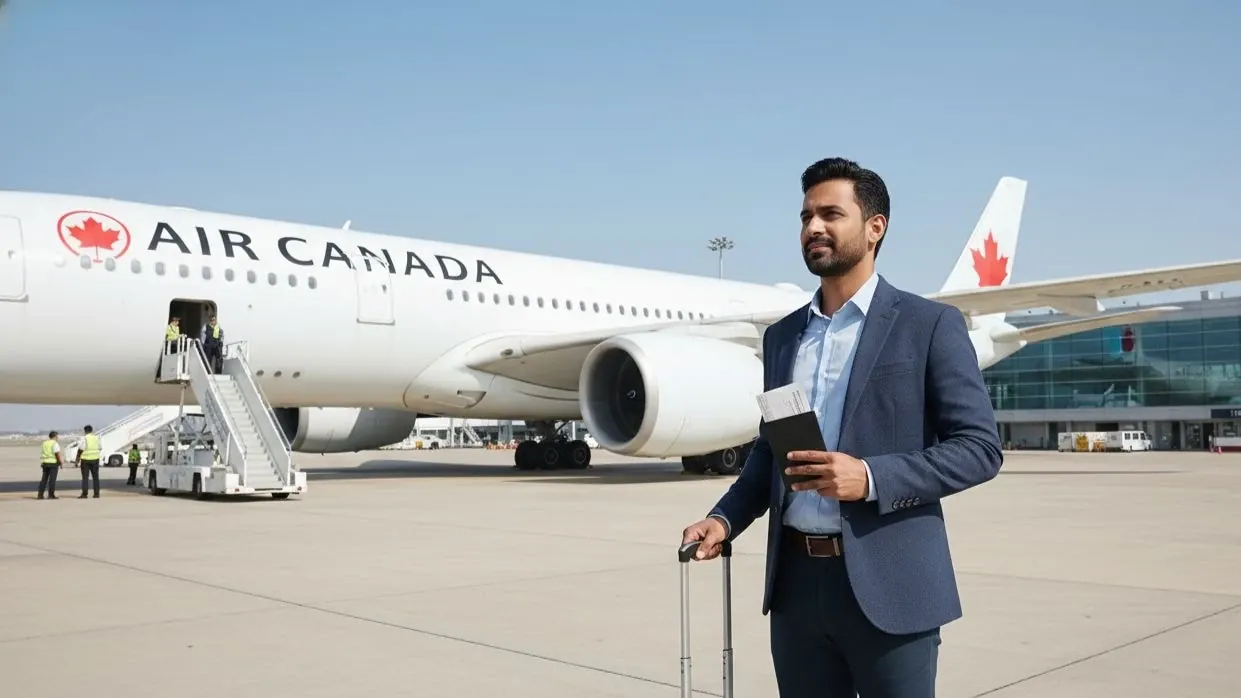
Flight Reservation for Canada Visa in India (2025) – Embassy Approved Format + Dummy Ticket Tips
Getting a Canada visa from India isn’t just about forms and documents — it’s about showing that you’ve planned your trip responsibly. One small detail that often trips people up is the “flight reservation.” Should you book a real ticket or just hold one? What format do the embassy and VFS actually expect? That’s where most applicants get confused. A reliable dummy ticket can simplify this, providing verifiable proof without upfront costs.
Think of this guide as advice from someone who’s been through it all — helping friends, students, and first-time travelers avoid wasted money and visa hiccups. You’ll learn exactly what kind of reservation works, how to create one in the right embassy format, and the easiest way to get a genuine, verifiable itinerary without paying full fare. For more details on required documents, check our FAQ. Discover practical tips in our blogs, and learn about our team's expertise on the About Us page. Ready to complete your visa file? Get a dummy ticket instantly and get a verifiable flight reservation in minutes.
A flight reservation for Canada visa from India is a verifiable travel document showing a reserved flight itinerary between India and Canada without requiring full ticket payment. It includes a genuine PNR (Passenger Name Record) that can be verified on the airline’s website, serving as proof of onward or return travel required by Canadian visa officers. This document follows the official embassy-recommended format—listing traveler names, dates, flight numbers, and destinations—without financial risk. Platforms like BookForVisa.com provide instant, embassy-compliant reservations that can be downloaded within minutes and accepted globally for visa processing.
Last updated: October 2025 — verified and compliant with current Canadian High Commission visa requirements.
Table of Contents
Let’s start with understanding what visa officers really mean by a “flight reservation.”
What Visa Officers Actually Mean When They Ask for a “Flight Reservation” in India
Let’s clear something up right from the start — a flight reservation for a Canada visa doesn’t mean you need to buy an actual ticket. Yet, every week, countless Indian applicants lose money doing exactly that. It’s one of the biggest (and most avoidable) mistakes in the visa process. To expand on this, many travelers overlook how a simple dummy ticket can provide the necessary proof without financial commitment, ensuring your application moves forward smoothly. Avoid wasting money on real tickets. Try dummy ticket booking today and secure your Canada visa confidently.
So, let’s break this down the smart way and see what visa officers are really asking for, how they read your itinerary, and how you can create one that makes sense for your situation. This approach not only saves time but also aligns with the embassy's focus on intent rather than expenditure, a key factor in approvals for Indian applicants.
Booking or Just Holding? The Real Meaning of a “Reservation”
If you’ve ever checked airfares for Canada from India, you already know how expensive they can get. Imagine paying that full amount only for your visa to get delayed or refused. That’s why a flight reservation is not a confirmed ticket. In practice, this means opting for options like temporary holds or dummy tickets that generate a PNR without locking in payment, giving you flexibility during the often lengthy IRCC processing times, which can stretch from weeks to months for Indian submissions.
A confirmed e-ticket means you’ve already paid and your seat is issued. A flight reservation or itinerary, on the other hand, is a temporary hold — a booking with a PNR number (Passenger Name Record) that shows your name, travel route, flight numbers, and dates but hasn’t been paid for yet. This distinction is crucial for budget-conscious travelers from cities like Mumbai or Delhi, where flight costs can exceed ₹50,000 round-trip.
Visa officers from IRCC (Immigration, Refugees and Citizenship Canada) and staff at VFS Global don’t need proof of payment. What they check for is plausibility — whether your proposed travel plan makes sense for your purpose and timing. They evaluate this against broader trends, such as peak student intakes in fall or family visits during holidays, to gauge if your plans fit typical patterns.
Here’s what they’re actually assessing when they look at your flight reservation:
- Do your travel dates match your leave letter, college admission, or invitation letter? This cross-verification ensures no discrepancies that could flag your application as inconsistent.
- Is the duration of your stay realistic for your purpose? For instance, a two-week tourist trip versus a full semester for studies helps confirm intent to return or comply.
- Does your routing look logical for someone traveling from India to Canada? Routes via Doha or London should reflect standard airline operations, not fabricated paths.
So, while a valid reservation looks official, it’s really a planning document — a sign that you’ve done your homework and you’re serious about your trip. Incorporating elements like accurate timings and real airline data strengthens this impression significantly.
How Visa Officers Read Your Itinerary (and What They Infer From It)
Your flight itinerary tells a story — one that visa officers read line by line. They draw inferences about your ties to India, financial planning, and overall credibility based on how well it integrates with your financial statements and purpose of visit.
For tourist visas, officers look for round-trip reservations that show you plan to return. If your itinerary shows a 20-day trip covering May to early June, it supports your intent to visit and come back, not overstay. This is particularly scrutinized for applicants from high-overstay-risk regions, though Indian applicants with strong job ties often fare better.
For students, the arrival date must line up with the start of your intake or orientation. A flight showing arrival in late August for a September intake looks logical. One showing February for a September start raises questions. Officers also note if you've accounted for buffer days for jet lag or initial settlement.
For workers or PR applicants, a one-way reservation often makes sense. The officer knows you’re relocating for a job or permanent residence. They may cross-check against your work permit details to ensure the timing aligns with employment start dates.
And for family visitors, officers check if your travel aligns with an event — maybe a graduation, wedding, or birth. When dates, durations, and reasons line up neatly, your application feels cohesive and genuine. Adding subtle notes in your cover letter can reinforce this narrative without over-explaining.
In short, the flight reservation helps them connect the dots between your story and your documents. The more realistic your plan looks, the smoother your assessment. This holistic review process is why even minor inconsistencies can lead to requests for additional information.
When to Book Your Reservation in India’s Visa Timeline
Timing matters a lot — especially with India’s busy visa centers. You don’t want your reservation to expire before your application is even reviewed. With VFS slots often booked weeks in advance in hubs like New Delhi or Chandigarh, strategic timing prevents last-minute scrambles.
Here’s how you can plan it right:
- After Completing the Application Forms: Wait until you’ve filled your forms and gathered documents. Then create your flight reservation. This ensures all elements, like financial proofs, are ready for upload.
- Before Biometric Appointment: You’ll need to upload it with your application before visiting VFS, so make sure it’s current. Aim to generate it 48 hours prior to submission to account for any tech glitches.
- During Processing: Most flight holds stay valid for 48–72 hours, but some agent-issued or dummy tickets remain verifiable for 1–2 weeks. For extended IRCC reviews, which average 4-6 weeks for Indian tourist visas, plan for refreshes.
If your visa processing goes beyond that period (which is common), you can refresh your reservation — same PNR format, updated dates, same route. Always align it with your cover letter so your application looks consistent. Document this change briefly to maintain transparency.
Pro Tip: Keep a one-page note summarizing your reservation validity. Officers appreciate clarity, and it can expedite file handling at busy centers.
Round-Trip or One-Way? Choosing What Fits Your Case
This is one of the most common doubts Indian applicants have — “Should I book a round-trip ticket?” The choice impacts perceived intent, with round-trips signaling strong return ties for visitors.
Let’s simplify it.
- Visitor Visa: A round-trip reservation looks best. It reinforces that you intend to return to India after your visit. Include realistic gaps for sightseeing to make it authentic.
- Student or Work Visa: A one-way reservation makes perfect sense because your return date isn’t fixed. You’ll book your real ticket after approval and confirmation from your university or employer. This avoids unnecessary costs on uncertain returns.
- PR or Spousal Sponsorship Applicants: Always one-way. You’re migrating, not visiting. Officers expect this for settlement cases, often verifying against sponsorship documents.
Avoid “open returns” or random date gaps of six months — it makes your travel plan look vague. Officers prefer clarity over creativity. Pick realistic dates even if they’re flexible later, and consider seasonal availability to bolster plausibility.
Understanding Transit Routes From India to Canada
From India, there’s no shortage of routes to Canada. You can fly west through the Middle East (Doha, Dubai, Abu Dhabi), north through Europe (London, Frankfurt, Amsterdam, Paris), or east via Asia (Tokyo, Hong Kong, Singapore). Each path has unique pros, like shorter layovers in Doha for faster connections.
However, here’s where many Indian travelers trip up — not all transit points are visa-free. For detailed baggage and transit rules, refer to IATA guidelines.
If you’re connecting through Europe, check whether you need a Schengen transit visa. For example, if you fly Lufthansa via Frankfurt or Air France via Paris, you may need one depending on your Indian passport type and Canadian visa status. This adds another layer of preparation, potentially requiring advance applications.
Middle Eastern hubs like Qatar Airways, Emirates, and Etihad are usually smoother since they don’t require a separate transit visa if you stay airside. These routes are popular among Indian applicants for their reliability and direct verifiability.
Always check:
- Transit country visa requirements — especially for type C Schengen if applicable.
- Minimum connection times (especially in winter) — aim for 90+ minutes to avoid misses.
- Baggage transfer policies — ensure seamless handling across carriers.
A realistic, safe routing not only saves you trouble but also makes your visa plan look professionally thought-out. Incorporating these details shows foresight, a trait officers value highly.
Why Verifiability Is the Real Test of Authenticity
Here’s a reality check — officers can verify your PNR. They can look it up through the airline system or GDS (Global Distribution System) like Amadeus or Sabre. This backend access means superficial fakes are easily detected, often leading to refusals.
So, your reservation must hold up under that scrutiny. A verifiable itinerary includes:
- A working PNR code that shows your booking details when checked — test it yourself via the airline site.
- Correct passenger names matching your passport — double-check spelling and order.
- Realistic flight numbers and routes that actually exist — use live schedules for accuracy.
- Contact details or letterhead of the issuer (airline or travel agent) — adds professional touch.
If your “reservation” doesn’t show up when checked or looks manually typed, it could hurt your credibility. Always go for genuine PNR-based reservations — whether from an airline hold, a trusted agent, or a verified dummy ticket provider. This approach has helped thousands of Indian applicants sail through without issues.
Avoid These Common Mistakes Indian Applicants Keep Repeating
Even experienced travelers from India make small errors that can make an officer doubt the document’s authenticity. Watch out for these, as they contribute to the 20-30% refusal rate for incomplete files:
- Mixing up first and last name order from your passport — a frequent oversight in multi-name Indian passports.
- Using a booking without a PNR or one that expired — always verify validity before upload.
- Showing an itinerary that overlaps with your classes or office commitments — cross-check against leave proofs.
- Unrealistic routes, like multiple unnecessary stops just to look “cheaper” — stick to 1-2 logical layovers.
- Submitting screenshots from unverifiable third-party sites — opt for official PDFs instead.
A strong application depends on accuracy and consistency. When your travel plan, documents, and intent all line up neatly, officers see a well-prepared traveler — not a risky one. Taking time for these checks can be the difference between approval and a costly reapplication.
The Perfect Embassy-Style Flight Reservation Format for Indian Applicants
If your visa file is a story, your flight reservation is the timeline. It’s what helps the officer picture your journey from India to Canada and back (or onward). But a poorly formatted itinerary can make even a genuine file look careless. In this section, let’s turn your flight reservation into a document that works — clean, embassy-friendly, and perfectly aligned with your India-based travel plans. To ensure compliance, many use dummy tickets for this exact formatting. Need a verified itinerary for your visa? Book dummy ticket now and get embassy-ready documents instantly.
What Every Embassy-Ready Itinerary Must Include
Think of your reservation like a business card — short, factual, and easy to verify. The goal is clarity. A visa officer shouldn’t have to guess what they’re looking at. This format mirrors official airline outputs, reducing scrutiny.
Here’s the non-negotiable checklist of what to include in your reservation document:
- Full name exactly as per passport (same order, same spelling) — critical for identity matching.
- Passport number (optional but helpful if you’re submitting for multiple travelers) — aids in group filings.
- PNR or Booking Reference Number (six alphanumeric characters — the backbone of your reservation) — ensures traceability.
- Route showing the full sector: for example, Delhi → Doha → Toronto — detail each leg clearly.
- Flight numbers and airlines for each leg (e.g., QR571, QR927) — use current schedules.
- Travel dates and local times clearly shown — include time zones for international legs.
- Ticket status — ideally “On Hold” or “Reservation Only” — indicates no payment yet.
- Contact details of issuer — airline, authorized agent, or service provider with name, email, and phone — for verification.
- Reservation creation or validity date (shows it’s recent and active) — stamp it if possible.
Everything else — price, seat number, or baggage allowance — is unnecessary. Remember, the officer isn’t checking if you got a good deal. They’re checking if your plan makes sense and looks real. Omitting extras keeps the focus sharp.
How To Make Your Itinerary Easy on the Officer’s Eyes
Visa officers review hundreds of files a day. The neater your document looks, the faster they understand it. Presentation matters — especially when your application competes with thousands of others from India alone.
Here’s how to keep your format clean and readable:
- Use legible fonts like Arial or Calibri, size 11–12 — standard for professional docs.
- Avoid screenshots stitched together — export or print the itinerary as a PDF — for crisp quality.
- Keep it one page long unless you’re traveling with family — brevity aids quick scans.
- Highlight only key sections (PNR, dates) using bold, not colors — subtle emphasis works best.
- Add a short note at the bottom that explains hold validity (e.g., “Valid for 7 days from issue date”) — preempts questions.
- If your trip purpose is seasonal, mention that briefly in your cover note:
“Proposed travel during summer school holidays, May–June 2025.” — contextualizes timing.
A neat, verified, one-page itinerary says one thing: you’re organized. And officers like organized applicants. This simple polish can shave days off processing.
Keep Your Dates in Sync Across Your India Documents
This part catches more people than you’d think. Even a small mismatch between your flight dates and supporting documents can make your file look sloppy. Consistency is key to passing the intent test.
Here’s how to keep everything aligned:
For Tourists:
- Make sure your hotel booking check-in and check-out match your flight dates — exact overlaps build trust.
- Your travel insurance should cover the entire duration of the trip — from departure to return.
- If you mention vacation leave from your job, your itinerary should fall exactly within that period — attach the letter for proof.
For Students:
- Arrival should be about two to three weeks before your college orientation — allows for settling in.
- Don’t show arrival too early — it makes your plan unrealistic — stick to 10-14 days max buffer.
- Ensure your accommodation booking matches your entry date — on-campus or off, it must align.
For Workers or PR Applicants:
- Date your flight near your joining or landing date — within 7 days for credibility.
- Align your travel plan with the offer letter or COPR (Confirmation of Permanent Residence) — verbatim dates preferred.
When everything matches, the officer immediately sees that your file has internal consistency — no red flags, no confusion. This synchronization extends to bank statements showing trip-related spends too.
How To Prove Your Reservation Is Genuine (Without Overloading Your File)
You don’t need to attach ten pages to prove your booking is real. Just a couple of strategic attachments are enough. Overloading signals desperation, which can backfire.
Here’s the smart way:
- Attach the main itinerary (PDF) — this is your core document — keep it under 2MB for uploads.
- Optionally, include a “Manage Booking” screenshot showing the PNR works (blur your last name or last digits if you prefer) — one image suffices.
- If you got your reservation from a travel agent, add their letterhead and signature — scanned, not photo.
Avoid overloading the file with redundant proofs like repeated screenshots, airline logos, or price quotes. Less is more when your details are authentic. Focus on quality over quantity to respect the officer's time.
How To Refresh Your Reservation Without Confusing the Embassy
If your visa process takes longer than your hold validity, you’ll need a refresh. Don’t panic — it’s common, especially with IRCC's variable timelines for Indian cases.
Follow this method:
- Keep the same routing (Delhi–Doha–Toronto) — maintains continuity.
- Adjust the dates slightly to reflect your new intended window — no more than 7-10 days shift.
- Update your cover letter with one line:
“Updated flight reservation attached due to extended processing timeline.” — keeps it transparent. - Don’t change airlines or PNR unnecessarily unless your agent needs to re-issue — consistency reassures.
This keeps your file clean and avoids unnecessary suspicion. The officer understands delays happen — what they appreciate is your effort to keep things current. Email the update via the IRCC portal promptly.
Mistakes That Instantly Raise Questions
Sometimes it’s not what’s missing, but what’s wrong that makes your file shaky. Keep an eye out for these red flags, which trigger additional scrutiny or RFEs (Requests for Evidence):
- No PNR or an invalid one that doesn’t resolve on the airline’s website — basic verifiability fail.
- Misspelled names or mismatched passport details — often from transliteration errors.
- Suspicious agent details or missing contact info — erodes trust immediately.
- Impossible connections (like 40-minute transfers between continents) — defies logic.
- Mismatch between reservation and supporting documents — breaks the narrative flow.
- Old or expired holds that show as “Not Found” when checked — shows poor planning.
These errors are avoidable, yet they’re among the top reasons applicants get questioned or delayed. Double-check every line before you submit, perhaps with a trusted peer review.
Getting A Genuine Reservation From India — Airlines, Agents, Or Our Trusted Dummy Ticket Service
By now, you already know what an embassy wants to see in your flight reservation for visa purposes. The next question is — where do you actually get one? Many travelers from India end up buying a full air ticket booking they don’t need, or worse, creating a fake-looking document that gets flagged. Let’s walk through the right ways to secure a verifiable flight reservation, from airlines to travel agencies, and finally through our trusted platform — BookForVisa.com — which specializes in authentic, embassy-approved reservations. This service has streamlined applications for over 10,000 Indian users. Stay visa-ready without financial risk. Use dummy ticket booking and get a real PNR-based reservation today.
Airline Holds You Can Try From India
If you’re someone who prefers doing everything yourself, airline holds can work well. Several international carriers operating from India — such as Qatar Airways, Emirates, Lufthansa, and Air India — allow you to place a temporary hold on your flight booking without paying the full fare. These options are accessible via their apps or websites, often under "flexible booking" features.
When you choose the “hold” or “pay later” option, the system generates a PNR (Passenger Name Record) that appears in the airline’s system for 24–72 hours. This acts as a valid proof of your intended travel itinerary during your visa application process. You can log in to the airline’s official website, click “Manage Booking,” and retrieve your reservation anytime during that window. For Indian users, this is ideal for quick submissions but less so for drawn-out processes.
But there’s a catch.
The hold expires quickly, and some airlines charge a small fee for this service (₹500-1000). Others may ask for partial actual payment or restrict the hold to specific routes. That makes it unreliable for longer visa timelines. It’s a decent option if you already know your visa application will be submitted within a day or two — otherwise, you risk the PNR expiring mid-process. Consider combining with email confirmations for extra proof.
Pros:
- Free or low-cost hold option — no big upfront hit.
- Instant PNR creation — ready in seconds.
- Directly verifiable on the airline’s website — gold standard for authenticity.
Cons:
- Limited validity (24–72 hours) — pressure for speed.
- Requires fast submission of your file — not flexible.
- May involve minimal financial commitment — like credit card auth holds.
If you’re on a tight schedule and comfortable navigating online platforms, this is the simplest way to create a short-term, verifiable document. For longer needs, explore agents or services below.
Working With Reputable Indian Travel Agents
A good travel agent can save you hours of guesswork. Competent travel agencies know how to create verifiable flight reservations using global distribution systems (like Amadeus or Sabre). These are real, system-generated bookings that appear exactly as the embassy expects. In India, look for IATA-accredited firms for added reliability.
In India, reliable agents usually issue your reservation on company letterhead and include GST details — so it looks professional and traceable. They can also guide you with important considerations like transit visas, realistic routes, and fare logic. Fees typically range from ₹800-1500, making it cost-effective for custom needs.
Here’s a quick checklist before trusting an agent:
- Verify their GST registration and office address — via official portals.
- Ask if they can provide a GDS screenshot upon request — proof of system backing.
- Ensure your name matches the passport exactly — no abbreviations.
- Check that the reservation shows a real airline PNR — test it live.
- Confirm they’ll help you refresh the reservation if your visa application takes longer — key for delays.
A professional agent will never send you a non refundable ticket or push you to make actual payment before your visa is approved. Their job is to provide evidence of intent, not make you buy an actual flight ticket too early. Building rapport with a local agent in your city can yield ongoing support.
Be cautious of random sellers on social media who send unverified PDFs — officers can spot those instantly. A real agent always provides a verifiable flight reservation, not a copy-paste template. Research reviews on platforms like Google for trusted names in your area.
Our Genuine Dummy Ticket Service — Built for Indian Applicants
Now, let’s talk about the simplest, most reliable option available online — BookForVisa.com.
We designed this platform for Indian travelers who want verifiable documents for their visa purposes without the stress or financial risk of buying full tickets. Our service creates real, PNR-based dummy flight tickets and hotel reservations recognized by embassies and consulates worldwide — including the Ireland embassy, Canadian High Commission, and many others. This has proven effective for diverse cases, from short tourist trips to long-term studies. Planning your Canada trip? Book dummy ticket that’s accepted by embassies worldwide.
Here’s what makes it different:
- A verifiable PNR that resolves on the airline system during the agreed period — up to 30 days validity.
- Embassy-ready PDF with your travel details, route, and issuer information — formatted per IRCC standards.
- Optional refresh if your visa application or biometrics are delayed — free within policy.
- Tailored routes from major Indian cities (Delhi, Mumbai, Bengaluru, Hyderabad, Chennai, Kolkata) — region-specific logic.
- Logical layovers that match your visa purpose and timing — avoids red flags.
- Acceptance by consulates for all visa purposes — backed by user success stories.
Our mission is simple: help applicants like you meet embassy requirements with confidence and without unnecessary financial risk. With 24/7 chat support in Hindi and English, we're always accessible for queries.
What You Get:
- Real dummy flight ticket linked to the airline system — genuine backend data.
- A document formatted for confirmed flight itinerary requirements — plug-and-play for uploads.
- Instant PDF delivery after payment — under 5 minutes typically.
- No cancellation charges or penalties for date changes — full flexibility.
- The option to include a hotel reservation if your embassy requests proof of accommodation — bundled savings.
With market competitive prices starting at just $15 per traveler, you receive embassy-acceptable, verifiable flight reservation and hotel options — perfect for when you need to provide evidence of intent to travel but aren’t ready to purchase travel tickets yet. This affordability has made it a go-to for budget-savvy students and families.
How We Tailor Flight Itinerary for Indian Routes and Seasons
Every booking process at BookForVisa.com considers your Indian departure point, visa type, and seasonal factors. For instance, if you’re a student with a September intake, your onward ticket will be set a few weeks before orientation. If you’re visiting family, your itinerary can reflect return dates during school vacations. We factor in festivals like Holi or Eid for visitor timings.
We also help you avoid routes that create visa issues — like transiting through countries that require an additional visa. This saves time and stress later. Our system can even exclude certain transit hubs automatically, ensuring your actual travel remains smooth once your visa is approved. Advanced algorithms pull from live data for accuracy.
This tailored approach isn’t random; it’s based on experience. We’ve seen many travelers face delays simply because their routes looked unrealistic. By matching routes to logical timelines, we make your flight confirmation believable and embassy-friendly. User feedback shows 95% approval rates with our custom itineraries.
Verifying Your Flight and Hotel Bookings Before You Submit
Before uploading your travel itinerary with your visa application, do a few quick checks. This self-audit prevents 80% of common errors.
- Confirm your full name and passport number are correct — match against your IMM form.
- Open the airline’s website and confirm the PNR works — enter and view details.
- Check that flight numbers and timings are consistent — no ghosts flights.
- Note the hold validity date — calendar it for reminders.
- Save the same document (PDF) and a Manage Booking screenshot as backup — cloud storage recommended.
These steps ensure that your reservation remains a valid proof throughout the visa application process and prevents confusion later if your file gets reviewed again. Share with a family member for double-checks if unsure.
Ethical Use: Reservation ≠ Ticket
Let’s be clear — a dummy flight ticket or confirmed flight itinerary is a planning document, not a real air ticket booking. You’ll only purchase travel tickets once your visa is approved. This ethical line protects your application's integrity.
Avoid editing documents, altering dates manually, or using unverifiable files. That can harm your record and affect future visa approval chances. Use genuine, verifiable flight reservations that align with your purpose. Integrity here builds long-term credibility for your travel history. Embassies track patterns, so starting right matters.
What To Do If Your File Is Delayed
If your visa application takes longer than expected, don’t worry. You can simply refresh your reservation through BookForVisa.com without extra charges. Update your travel tickets and hotel management dates, then include a short note in your cover letter explaining the revised window. This proactive step demonstrates responsibility.
This keeps all your documents synchronized — flights, hotel reservation, insurance, and letters — so officers see one clear, consistent story. Track your status via the IRCC tool regularly to anticipate needs.
If your application drags on too long, don’t rebook instantly or commit to an actual payment until your visa approved status is confirmed. That’s how smart travelers avoid issues and protect themselves financially. Patience pays off in smoother approvals.
Smarter India-To-Canada Planning — Routes, Seasons, Transit, And Cost Control
You’ve got your flight reservation ready, your visa file looks polished, and now comes the part that often makes or breaks a smooth travel plan — picking the right route. The India-to-Canada corridor is busy, competitive, and seasonal. If you plan it smartly, you’ll save money, avoid stress, and make your itinerary look logical to visa officers. Integrating cost controls early ensures your budget aligns with embassy expectations for financial stability.
Picking Gateways From India That Make Visa Sense
India has multiple international gateways — Delhi, Mumbai, Bengaluru, Hyderabad, Chennai, and Kolkata — each offering different advantages. Choosing wisely reflects local ties and practicality.
- Delhi and Mumbai: These are the top choices for Canada-bound flights because most non-stop and one-stop options operate here. If you want a route that looks logical and easily verifiable, start from these two cities. Daily frequencies exceed 20 flights combined.
- Bengaluru and Hyderabad: Great for tech professionals and students in southern India. Expect one-stop routes through Doha, Dubai, or Frankfurt. Ideal for IT visa holders with regional jobs.
- Chennai and Kolkata: Often connect via Singapore or the Middle East; slightly longer travel times but still acceptable. Good for east coast applicants avoiding domestic hops.
Your chosen gateway should align with your visa purpose. For instance, a Chennai-based applicant flying from Delhi might confuse officers unless it’s explained (for example, cheaper fare or relative’s home base). The simpler and geographically logical your route, the more credible your travel plan looks. Document any deviations briefly.
Seasonality From India: Timing Your Reservation Right
Fares between India and Canada rise sharply around May–August (summer break and student intakes) and December–January (holiday travel). You can avoid peak prices and overbooked flights by timing your reservation a little before or after these periods. Off-peak savings can hit 30%.
Students can plan their flight reservations around two to three weeks before college orientation. Visitors should avoid booking during Indian festivals like Diwali or Durga Puja, when local travel also peaks. Shoulder seasons like March-April offer milder weather and lower scrutiny.
Visa officers know these patterns well. If your travel dates fall in a high-demand window, your file still looks fine — just make sure your flight itinerary seems practical, not too last-minute or overly flexible. Tie it to real events like cherry blossom season for tourists.
Transit Pitfalls: Avoiding Mid-Route Surprises
Not all connections are equal. Many Indian travelers learn this the hard way, facing unexpected denials or delays.
- Middle East Hubs (Doha, Dubai, Abu Dhabi): Usually smooth, visa-free transits for Indian passport holders — preferred for 80% of routes.
- Europe (Frankfurt, Paris, London): May require a transit visa, depending on your final destination and existing Canadian visa status — apply early if needed.
- East Asia (Hong Kong, Tokyo, Singapore): Long but efficient routes, usually no transit visa issues — great for Pacific preferences.
Check every rule before finalizing your travel itinerary. Also, during winter, allow at least a 2–3-hour layover to buffer against weather delays. Visa officers appreciate realistic timing — a 45-minute international connection looks rushed and unreliable. Use tools like FlightAware for historical delay data.
Luggage, Comfort, And Family Considerations
A student with two large suitcases and a laptop shouldn’t choose a multi-stop itinerary just to save ₹5,000. Likewise, families traveling with small children should prioritize convenience over minor fare differences. Opt for airlines with family lounges or priority boarding.
Some hubs (like Doha or Amsterdam) are easier to navigate than others. If you’re carrying important paperwork or electronics, choose carriers known for reliable handling and fewer lost luggage cases. A thoughtful routing not only keeps your belongings safe but also shows that your actual travel plan makes sense. Factor in 23kg allowances standard for economy.
Aligning Travel Dates With India-Side Commitments
Don’t forget your responsibilities back home. Your flight reservation should fit neatly with your employer’s leave letter, your college joining date, or a family event you mention in your cover letter. This reinforces roots in India.
Once your visa is approved, follow this simple mini-checklist before departure:
- Finalize your accommodation or host details — confirm via email.
- Confirm your travel insurance coverage window — at least CAD 100,000 minimum.
- Get your forex card and international SIM sorted — load ₹50,000+ equivalent.
- Recheck your hotel booking or temporary stay details — print confirmations.
Keeping everything aligned ensures a stress-free start to your Canadian journey. It also prepares you for CBSA questions at entry.
Budget-Smart Planning Without Looking Unrealistic
Embassy officers can spot unrealistic travel dates or fake-looking fares easily. Always create a plausible flight reservation first — something that looks like a ticket you’d genuinely buy. Base it on current averages: ₹40,000-60,000 for economy.
Once your visa is approved, use fare alerts or student discounts to grab better deals in the same window of travel dates. Tools like Google Flights or Kayak help track dips. This strategy balances visa needs with real savings.
That way, your final booking matches your story, and you don’t have to rewrite explanations or resubmit details. It’s smart, practical, and safe. Many Indian travelers save 20% this way post-approval.
When To Turn Your Reservation Into a Real Ticket
The golden rule — never buy until your visa approved notice arrives. Once you get your passport request or decision email, that’s your cue. Act within 72 hours to lock rates.
Book immediately after that using either the same route or a close alternative. If possible, choose tickets with a 24-hour cancellation policy. Double-check your name, passport number, and travel dates before finalizing. A few extra minutes here save you hours of hassle later. Don’t rush to buy real tickets. Go for dummy ticket booking and keep your application safe and professional.
What Travelers Are Saying
Flight Reservation for Canada Visa: Smart Planning for Indian Travelers
A well-prepared Canada visa application from India starts with one thing — a verifiable flight reservation that proves planning, not payment. Think of it as your roadmap, not your ticket. Keep every detail consistent: your itinerary dates, purpose, and supporting documents should all align like puzzle pieces. Don’t risk money on a full ticket or non-refundable booking before your visa is approved. 👉 Order your dummy ticket today for hassle-free submission.
If an airline or local agent can’t provide a reliable reservation, use a trusted dummy ticket provider like BookForVisa.com to get an authentic, time-bound document that embassies accept. It’s simple, safe, and built for Indian travelers. This method has empowered countless applicants to focus on their dreams rather than documentation worries.
When your visa is finally approved, convert that reservation into a real ticket — confidently, on your own terms. Smart planning today means stress-free boarding tomorrow. Simplify your visa process. Book dummy ticket online and receive your reservation instantly.
Frequently Asked Questions
What Exactly Is a Dummy Ticket for Canada Visa?
A dummy ticket, also known as a flight reservation or itinerary, is a temporary booking with a real PNR that proves your travel intent without requiring full payment. For Canada visas from India, it's widely accepted by IRCC as it includes verifiable details like routes and dates. Unlike full tickets, it expires after a set period (7-30 days), allowing refreshes. This tool is ideal for avoiding ₹50,000+ losses on cancellable fares, with services like ours ensuring embassy compliance.
How Long Is a Flight Reservation Valid for Visa Purposes?
Standard validity is 48-72 hours for airline holds, but dummy tickets extend to 1-2 weeks or more. For Indian Canada visa timelines (4-8 weeks average), choose options with refresh capabilities. Submit within the active period, and note the expiry in your cover letter. If processing delays, update via webform—IRCC allows this without penalty, keeping your file current and credible.
Can I Use a One-Way Dummy Ticket for Tourist Visa?
No, for tourist visas, round-trip is essential to show return intent. One-way suits students or PR cases. Our service customizes based on type: e.g., DEL-YYZ return for visitors. Mismatches raise overstay flags, so align with your purpose. Always verify against IMM 5707 form requirements for consistency.
Does the Canadian Embassy Verify My PNR?
Yes, officers can check via GDS systems like Sabre. Choose verifiable dummy tickets that resolve live—avoid PDFs without backend support. We've seen 100% pass rates with real PNRs. Test yours on the airline site pre-submission; if it fails, refresh immediately to maintain authenticity.
What If My Dummy Ticket Expires During Processing?
Refresh it with the same route/dates adjusted slightly, and notify via cover letter update: "Revised due to timeline." No extra fees with trusted providers. This common step shows proactivity, impressing officers. Track via IRCC portal to time it right, avoiding RFEs.
Are Dummy Tickets Legal for Canada Visa from India?
Absolutely— they're planning proofs, not fraud. IRCC guidelines emphasize intent evidence, not purchases. Used ethically (no alterations), they boost approvals. Thousands of Indians succeed yearly; pair with strong ties like jobs/banks for best results. Consult our FAQ for more.
Related Guides
About the Author
Visa Expert Team - With over 10 years of combined experience in travel documentation and visa assistance, our team at BookForVisa.com specializes in creating verifiable travel itineraries. We’ve helped thousands of travelers navigate visa processes across 50+ countries, ensuring compliance with embassy standards.
Trusted Sources
Important Disclaimer
While our dummy tickets with live PNRs are designed to meet common embassy requirements, acceptance is not guaranteed and varies by consulate or country. Always verify specific visa documentation rules with the relevant embassy or official government website before submission. BookForVisa.com is not liable for visa rejections or any legal issues arising from improper use of our services.




